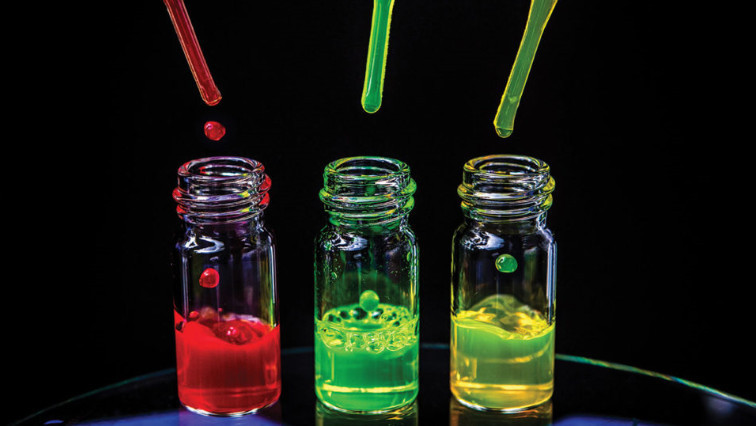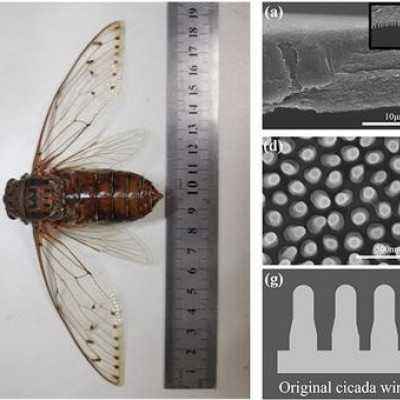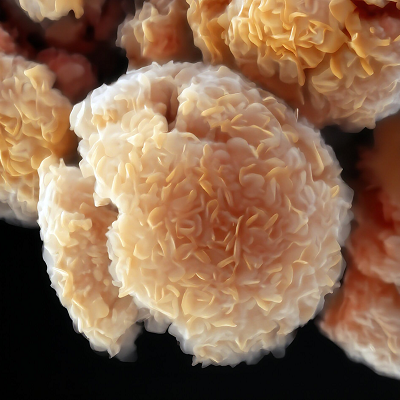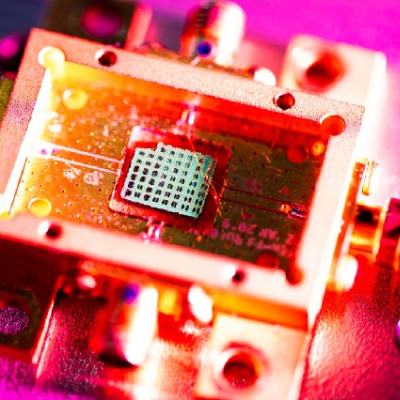In general, QDs have two distinct energy bands in which electrons can exist. They are the so-called “valence band” where electrons are fully occupied and the “conduction band” where electrons are empty, respectively. The gap between these two bands is called the “band gap”, where electrons cannot exist. Upon photoexcitation by light with higher energy than the band gap, electrons within the valence band can be excited and jump into the conduction band. A vacancy formed in the valence band after this process is called a “hole”, which is defined as a carrier having a positive charge.
A hole usually pairs with an electron in the conduction band and forms a quasi-particle called an “exciton” that is bound via Coulomb interaction. After formation, the exciton can recombine spontaneously and emit light with the same energy as the band gap. The most important parameter in this process is the “transition dipole moment”, which is an electric dipole moment associated with the transition between the two states. Typically, the larger this quantity, the greater the recombination rate.
The problem is that not all excitons emit light during the recombination process as mentioned above. Specifically, another type of recombination process called “Auger recombination” can occur frequently in quantum dots. Auger recombination is a nonradiative multicarrier process whereby the exciton recombination energy is not converted into a photon but instead transferred to a third charge. Typically, the Auger recombination is one of the biggest hindrances to improving the efficiency of QDs based optoelectronic devices, especially displays.
To date, numerous spectroscopic studies have been conducted to suppress the Auger recombination process in QDs. However, most previous studies have mainly focused on modifying the structural characteristics of quantum dots and synthesizing new types of quantum dots structures. Therefore, research on active control of the Auger recombination process by manipulating the optical environment is lacking.
The Center for Molecular Spectroscopy and Dynamics within the Institute for Basic Science (IBS), South Korea has successfully observed the Auger recombination in CdSe QDs occurring at a few picosecond timescales by utilizing transient absorption spectroscopy. The research group demonstrated that the process can be controlled through metamaterial nanostructures for the first time. Based on the fact that the Auger recombination process strongly depends on the transition dipole moment of excitons, the research team revealed that the interaction between transition dipole in QDs and its image formed by the nanostructure can suppress the Auger recombination process by reducing the amplitude of the net transition dipole moment.
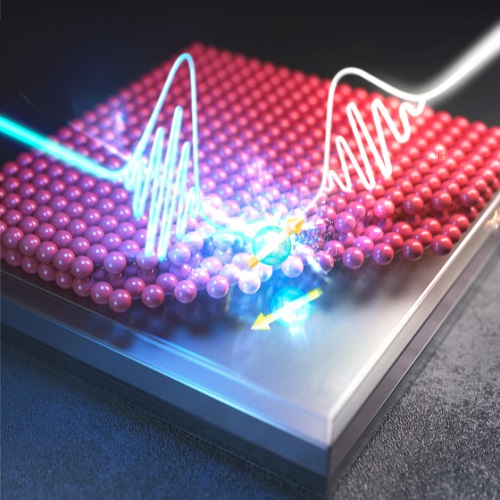
Figure 1. Variations of transition dipole moment due to an image dipole interaction
The transition dipole triggered by light in the quantum dot film can be affected by its image created by nanostructures.
According to researchers, this study found a new way of manipulating the Auger process using nanostructures. They stressed that they first revealed the fundamental mechanism of suppressing the nonradiative Auger recombination by decreasing the amplitude of the net transition dipole moment through simply combining with external structures without complicating molecular technology. It is believed that the findings in this study will have an important implication in improving the efficiency of QD-based devices in the future.
Their finding was published on December 23 in “Advanced Optical Materials (IF = 9.926)”, one of the prominent journals in the optics field.
Read the original article on Institute for Basic Science (IBS).

